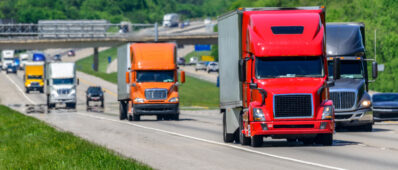Abstract
Drayage trucks (i.e., heavy-duty trucks that move containers and bulk freight between ports and rail facilities, distribution centers, and other nearby locations) are a critical part of port operations, however, they also adversely affect air quality. In California, drayage fleets are facing strict regulatory pressure under the Advanced Clean Fleets (ACF) regulations. Starting in January 2024, all newly registered drayage trucks in the CARB Online System must be zero emission vehicles (ZEVs), so either a battery electric truck (BET) or hydrogen fuel cell electric truck (HFCET). By 2035, every drayage truck operating in California must be zero-emission.
To successfully meet this policy goal, it is important to understand the viewpoints of drayage fleet operators. However, there is limited knowledge about how fleets of various sizes, especially small fleets with 20 or fewer vehicles (which make up 70% of the sector), are responding to ZEVs and related policies. To bridge this gap, the study team surveyed both small and large drayage fleet operators at the Ports of Los Angeles and Long Beach, with 71 companies participating. As part of the survey, fleet operators were asked to choose a preferred truck under different scenarios. In the first scenario, they chose between different ZEV trucks; in the second scenario, they chose between ZEVs, diesel, or natural gas trucks, shedding light on potential reasons which fleets might delay ZEV adoption if they still prefer diesel or natural gas trucks. The team analyzed around 650 choice observations using statistical models to explore these preferences, as well as other survey items regarding their perceptions.
